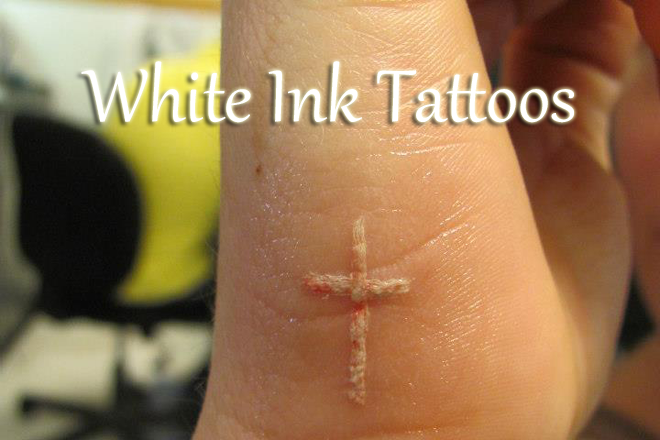What is a White Ink Tattoo?
White ink doesn’t follow the typical tattoo process of stenciling and outlining in black. It it done completely with white ink, leaving a ghostly image that looks quite different from a traditional tattoo. These tattoos can look like brands (or scarification), or they can appear extremely subtle. The white ink utilized for tattoos is not the same ink you might have seen used for mixing shades in a color tattoo, but rather, it’s a thicker high quality white ink that is specially made to stand out on its own.
With a white tattoo, a stencil can be used or the tattoo can be done freehand. If using a stencil, the artist must be careful to make sure the ink from the stencil does not mix with the ink being used, as this can dull the brightness of the ink. In addition, white tattoos require several passes over the area to make sure the white ink sinks fully into your skin. Compared to black or colored inks, white ink is not as likely to be absorbed by skin.
Are White Ink Tattoos Raised?
White ink tattoos are not any different from regular tattoos. The body handles white ink tattoos as it would handle any type of wound. It takes care of the inky pathogens by swallowing them up with macrophages. It then starts healing the wound, raising it with a scar tissue in the process. White ink is sometimes transparent and always quick to fade, so the work of your tattoo artist will really show up underneath. While uneven tattoos are a sign of inconsistency, they are unavoidable when different areas have different levels of detail. Therefore, thin outlines work best for white ink tattoos — it’s difficult to tell that one part is raised higher than the other when you can’t directly compare them. It simply looks like the whole thing is raised up by just a little bit.
Are There Issues with White Ink?
Skin Tones
White tattoos are increasing in popularity, but some issues still need to be worked out with this type of tattoo. Many individuals, particularly those with darker skin tones, cannot absorb enough of the white ink for it to appear brightly on their skin.
Skin Reactions
Some may also discover that they have a reaction to the white ink. This is much more common than a reaction to black tattoo ink. In some scenarios, the white ink areas swell, itch and may even ooze from the tattoo which can be a sign that you skin is actually rejecting the white ink, resulting in no tattoo in that area.
Placement
Another issue with white ink tattoos is that they are not great for areas that will be exposed to the sun and weather elements. Harsh household chemicals can also damage a white tattoo. If frequently exposed to the sun, white ink can turn quite dull. This is why it is crucial to choose an area that will be covered when outdoors such as your chest, back or even the underside of your arm. White ink is not ideal for hand tattoos or other exposed places.
These are just a few important things to know if you are considering a white ink tattoo. Don’t hesitate to contact Tattoo Consortium with the link below for more information!






